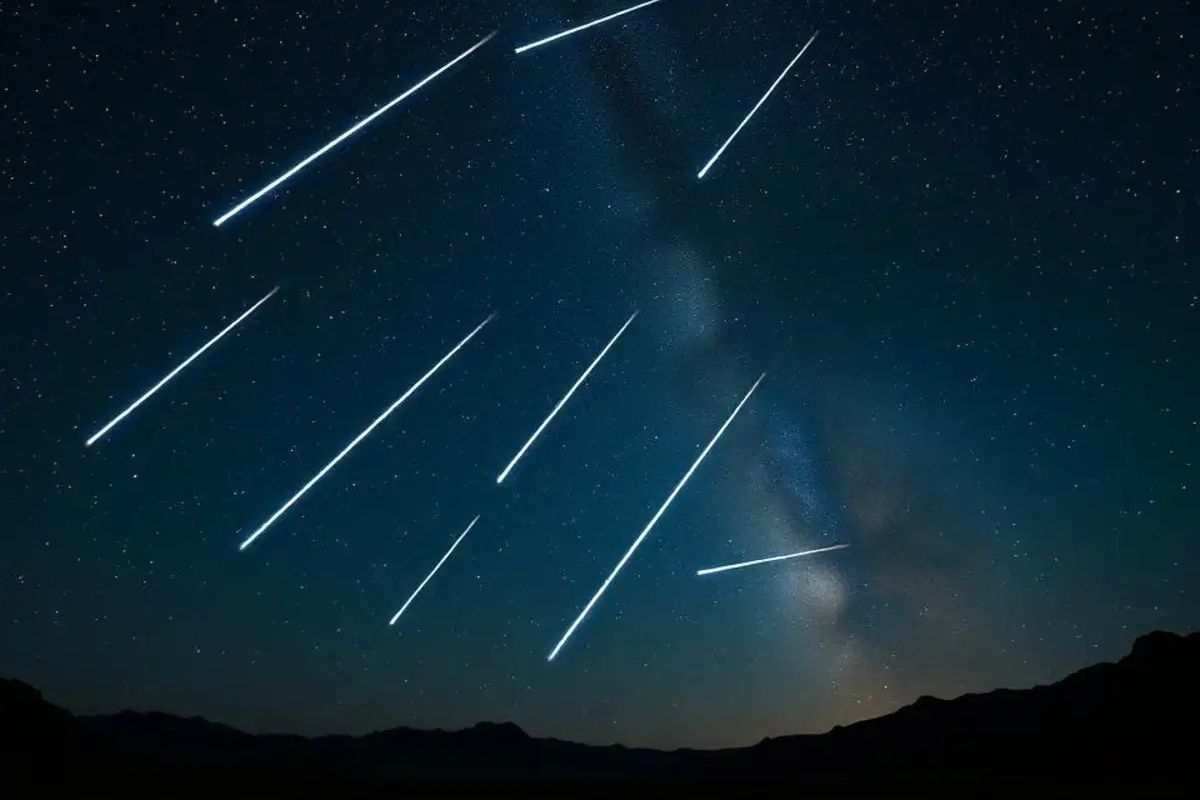Key Points:
- The Southern Delta Aquariids and Alpha Capricornids meteor showers will peak together on the night of July 29–30, 2025, under favorable viewing conditions due to a waning moon.
- Best viewing is between 2 a.m. and 4 a.m. local time; no equipment is needed—just head to a dark spot, lie back, and use your eyes.
- The Perseids will peak in mid-August, but an 84% full moon may hinder visibility, making late July a better time to catch early Perseids along with the other two showers.
Stargazers across the globe are in for a cosmic show as two meteor showers—the Southern Delta Aquariids and the Alpha Capricornids—are set to peak simultaneously on the night of July 29 into the early hours of July 30, 2025. This rare overlap, enhanced by a waning moon only 27% full, means minimal light pollution and ideal conditions for viewing.
The Delta Aquariids, known for steady streams of faint meteors, typically deliver 15 to 20 meteors per hour at peak. These often leave lingering ion trails in the sky. Meanwhile, the Alpha Capricornids, though producing fewer meteors—about 3 to 5 per hour—are celebrated for their slow, dramatic fireballs that can streak across the sky for seconds.
Best Viewing Tips: Timing, Direction, and What to Expect
For the best experience, astronomers recommend heading outdoors after midnight, when both showers’ radiant points rise higher in the southern sky. With no telescopes needed, the best approach is to find a dark, open area away from city lights, lie flat on your back, and let your eyes adjust for about 20 minutes.
- When: Night of July 29 to early July 30, with peak visibility between 2 a.m. and 4 a.m. local time
- Where to look: Face generally southward, but scan the entire sky
- Equipment needed: None—binoculars and telescopes limit visibility; use the naked eye
The Delta Aquariids originate from the 96P/Machholz complex, while the Capricornids are fragments of Comet 169P/NEAT. Their differing origins allow skywatchers to trace the direction of meteor trails back to the constellations Aquarius and Capricornus, distinguishing between the two.
Perseids Coming Next—but Moonlight May Dull the Glow
The famous Perseid meteor showers, active from mid-July through August, officially peak on August 12–13. Known for its prolific rate of up to 100 meteors per hour, the Perseids are typically a summer highlight. However, in 2025, the 84% full moon during peak nights may obstruct visibility.
Skywatchers hoping to catch early Perseid meteors might be better off heading out in late July, while the moon is still dim. This unique alignment allows for a triple meteor shower experience, with Delta Aquariids, Alpha Capricornids, and early Perseids all lighting up the night.
The night of July 29 offers an extraordinary chance to witness a cosmic duet of meteor showers—marked by bright fireballs and faint, fast streaks—under ideal dark sky conditions. Whether you’re an astronomy enthusiast or a casual night-sky gazer, this rare meteor shower promises a dazzling natural light show you won’t want to miss.
Visit Visionary CIOs for the most recent information.











